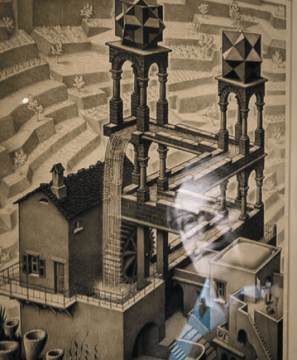Philip Ball in Prospect Magazine:
Penrose—who has now won the Nobel—is still defining the way we see the universe. But, asked Philip Ball in 2017, in today’s world of ultra-specialised science, could a thinker of such breadth ever emerge again?
 Penrose hails from one of the great intellectual dynasties of the 20th century. His father Lionel was a distinguished psychiatrist and geneticist, his uncle was the surrealist artist Roland Penrose. Roger was one of four children; older brother Oliver became a theoretical physicist, younger brother Jonathan was British chess champion a record-breaking 10 times, and sister Shirley Hodgson is a professor of cancer genetics.
Penrose hails from one of the great intellectual dynasties of the 20th century. His father Lionel was a distinguished psychiatrist and geneticist, his uncle was the surrealist artist Roland Penrose. Roger was one of four children; older brother Oliver became a theoretical physicist, younger brother Jonathan was British chess champion a record-breaking 10 times, and sister Shirley Hodgson is a professor of cancer genetics.
In this house there was no escaping mathematics. “I used to make polyhedra with my father,” Penrose told me. “There were no clear lines between games and toys for children and his professional work.” That, needless to say, may have been a mixed blessing: “He wasn’t very good at relating to us in an emotional way—it was all about science and mathematics.”
But if number games substituted for play in the Penrose home, one happy result may have been an almost playful quality of his approach to mathematics. His thinking is animated by a phenomenal visual sense of geometry. The sheer power of his mind’s eye is, his peer Martin Rees, the current Astronomer Royal, suggested to me, his defining characteristic. In all of Penrose’s books, abstruse theories are illuminated by pictorial representations. He puts this visual sensibility down to his father, but his grandfather James Doyle Penrose was, like his uncle Ronald, a professional artist. In Roger, this ability manifests itself in an intuition of complex spatial relationships, which gave him an affinity for the Dutch artist MC Escher. While a graduate student, Penrose saw “an exhibition in the Van Gogh Museum by this artist I’d never heard of. I was quite blown over. I came away and drew pictures of bridges and roads, which gradually simplified into the tribar.” This is the optical illusion of an “impossible triangle,” the corners of which make sense spatially on their own but not together.
More here.
